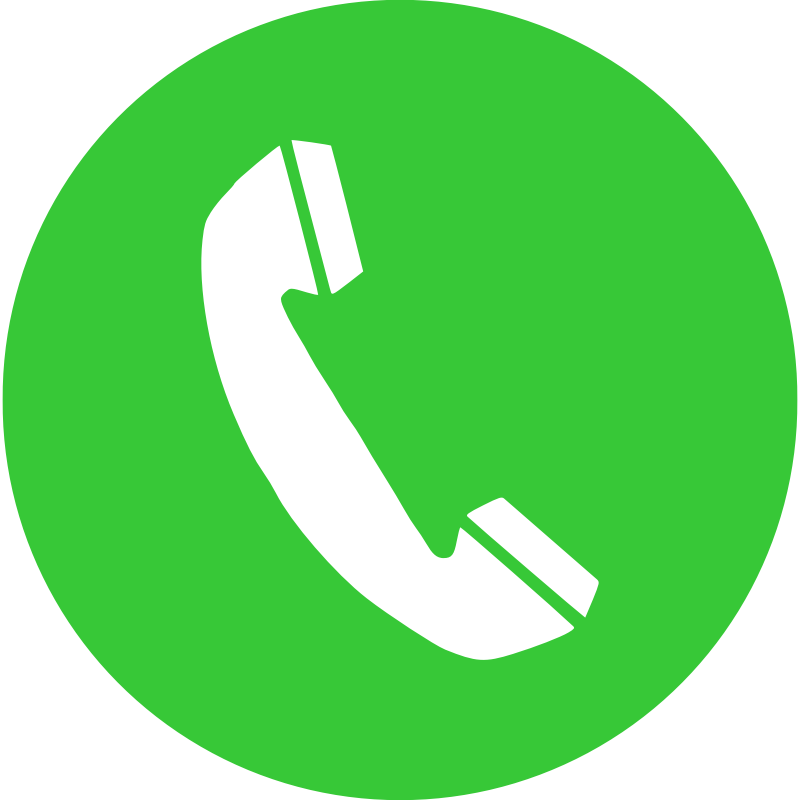product design
Introduction
Introduction to Product Design:
Product design is a multidisciplinary field that involves the creation and development of products, ranging from everyday items to high-tech gadgets. It is a process that integrates art, science, technology, and business to create products that meet the needs and desires of users while considering factors such as functionality, aesthetics, usability, and sustainability.
Key Elements of Product Design:
-
User-Centered Design: At the core of product design is the emphasis on understanding the needs and preferences of the end-users. User-centered design involves gathering insights into user behaviour, preferences, and pain points to create products that provide a positive and seamless user experience.
-
Functionality: Products need to fulfil a specific purpose or solve a problem. The functionality of a product is a crucial aspect of its design, ensuring that it not only meets the user's requirements but also performs its intended tasks efficiently.
-
Aesthetics: The visual appeal of a product plays a significant role in its success. A well-designed product considers aesthetics, creating an emotional connection with users and enhancing the overall user experience.
-
Usability: Products should be easy to use and navigate. Usability is about designing interfaces and interactions that are intuitive and user-friendly, reducing the learning curve for users and improving overall satisfaction.
-
Materials and Manufacturing Processes: Product designers must consider the materials used in manufacturing, as well as the processes involved. This includes evaluating the feasibility, cost, and environmental impact of materials and production methods.
-
Innovation: Successful product design often involves pushing the boundaries of innovation. This could mean introducing new features, technologies, or materials that set the product apart from competitors and meet emerging market demands.
-
Sustainability: With a growing awareness of environmental issues, product designers are increasingly incorporating sustainable practices into their designs. This includes using eco-friendly materials, designing for recyclability, and considering the product's entire life cycle.
-
Market Research and Trends: Product designers need to stay informed about market trends and consumer preferences. Conducting thorough market research helps identify opportunities, anticipate challenges, and ensure that the design aligns with current and future market demands.
-
Prototyping and Testing: Before mass production, product designers often create prototypes to test and refine their designs. This iterative process allows for improvements and adjustments based on user feedback and performance testing.
-
Collaboration: Product design is a collaborative process that involves working with various stakeholders, including engineers, marketers, manufacturers, and end-users. Effective communication and collaboration are crucial for bringing a product from concept to market successfully.
In conclusion, product design is a dynamic and evolving field that blends creativity, technical expertise, and a deep understanding of user needs. It plays a pivotal role in bringing innovative and functional products to the market, enriching the lives of consumers and contributing to the success of businesses.
Product design admission
Admission to a product design program typically involves a combination of academic qualifications, a strong portfolio, and possibly an interview. Here's a general overview of the steps you might need to take to pursue admission to a product design program:
-
Educational Background:
-
Undergraduate Degree: Most product design programs require applicants to have a bachelor's degree, often in a related field such as industrial design, graphic design, engineering, or a closely related discipline. Some programs may accept students from diverse backgrounds, but a relevant undergraduate degree is often preferred.
-
Portfolio:
-
Create a Strong Portfolio: Your portfolio is a critical component of your application. It should showcase your design skills, creativity, and the range of projects you've worked on. Include a variety of projects that demonstrate your ability to solve design problems, your understanding of user-centered design, and your proficiency with relevant tools and techniques.
-
Transcripts:
-
Submit Academic Transcripts: You will likely need to provide official transcripts from your previous educational institutions. These transcripts should reflect your academic performance and demonstrate that you meet the program's academic requirements.
-
Letters of Recommendation:
-
Secure Letters of Recommendation: Some programs may require letters of recommendation from professors, employers, or professionals who can speak to your academic abilities, work ethic, and potential for success in a product design program.
-
Statement of Purpose:
-
Write a Statement of Purpose (SOP): Craft a compelling SOP that outlines your reasons for pursuing product design, your career goals, and how the specific program aligns with your aspirations. This is an opportunity to showcase your passion and commitment to the field.
-
Entrance Exams:
-
Check for Required Exams: Some programs may require standardized tests, such as the GRE (Graduate Record Examination) or a design-specific test. Check the specific admission requirements of the program you are interested in.
-
Interviews:
-
Prepare for Interviews: Some programs may require an interview as part of the admission process. Be prepared to discuss your portfolio, your design process, and your motivations for pursuing product design.
-
Work Experience (if applicable):
-
Highlight Relevant Work Experience: If you have relevant work experience in design or a related field, include this in your application. Practical experience can strengthen your application and demonstrate your readiness for the program.
-
Research Programs:
-
Research Potential Programs: Explore different product design programs to find the ones that best align with your career goals, values, and design philosophy. Consider factors such as faculty expertise, available resources, and alumni success.
-
Application Submission:
-
Submit a Complete Application: Ensure that you submit all required materials, including your application form, transcripts, portfolio, letters of recommendation, and any other specified documents, by the application deadline.
-
Financial Aid and Scholarships:
-
Explore Financial Aid Options: If you need financial assistance, explore available scholarships, grants, and other financial aid options offered by the program or external organizations.
Remember that admission requirements can vary between programs and institutions, so it's essential to carefully review the specific requirements of the product design programs you are interested in. Additionally, contacting the admissions office for guidance and clarification on any questions you may have can be beneficial.
Product design eligibility
The eligibility criteria for product design programs can vary between universities and programs of the university hut. However, there are some common requirements that you may find for admission to a product design course, whether at the undergraduate or graduate level. Here are general eligibility criteria:
-
Educational Qualifications:
-
Undergraduate Level: For a bachelor's degree in product design, you typically need to have completed high school or its equivalent. Some programs may have specific requirements for coursework in art, design, or related fields during high school.
-
Graduate Level: To pursue a master's degree in product design, you usually need a relevant bachelor's degree. This could be in industrial design, graphic design, engineering, architecture, or a closely related field.
-
Portfolio:
-
Strong Design Portfolio: A portfolio showcasing your design skills, creativity, and previous projects is a crucial part of the application process for product design programs. This portfolio should demonstrate your ability to think critically, solve design problems, and convey your design process.
-
Entrance Exams (if required):
-
Standardized Tests: Some graduate programs may require standardized tests like the GRE (Graduate Record Examination). Check the specific requirements of the programs you are interested in to determine whether such tests are necessary.
-
Letters of Recommendation:
-
Recommendation Letters: Many programs ask for letters of recommendation from professors, employers, or professionals who can attest to your academic abilities, work ethic, and potential for success in a product design program.
-
Statement of Purpose:
-
Statement of Purpose (SOP): A well-written SOP is often required. It should explain your motivation for pursuing product design, your career goals, and why you are interested in the specific program.
-
Transcripts:
-
Academic Transcripts: You will likely need to provide official transcripts from your previous educational institutions. These transcripts should reflect your academic performance and demonstrate that you meet the program's academic requirements.
-
Interview (if required):
-
Interview: Some programs may conduct interviews as part of the admission process. This is an opportunity for you to discuss your portfolio, design philosophy, and aspirations.
-
Work Experience (if applicable):
-
Relevant Experience: Some graduate programs may prefer or require applicants to have relevant work experience in design or a related field. Check the program's requirements to see if this applies.
It's important to note that eligibility criteria can vary widely, so it's crucial to review the specific admission requirements of the product design programs you are interested in. Contact the admissions office of the university hut for the most accurate and up-to-date information.
Product design syllabus
The syllabus for product design courses can vary based on the level of the program (undergraduate or graduate) and the specific curriculum of the university hut offering the course. However, I can provide a general outline of topics that are commonly covered in product design programs:
1. Design Fundamentals:
-
Elements and principles of design
-
Color theory
-
Composition and layout
2. Drawing and Visualization:
-
Sketching techniques
-
Rendering and illustration
-
2D and 3D drawing
3. Design Thinking and Process:
-
Problem-solving methodologies
-
User-centered design
-
Ideation and brainstorming
4. Materials and Manufacturing:
-
Understanding materials and their properties
-
Manufacturing processes
-
Prototyping techniques
5. Computer-Aided Design (CAD):
-
Introduction to CAD software (e.g., AutoCAD, Solid Works, Rhino)
-
3D modeling and rendering
-
Parametric design
6. Ergonomics and Human Factors:
-
Anthropometrics and ergonomics
-
Human-computer interaction
-
User experience (UX) design
7. Product Lifecycle Management (PLM):
-
Overview of the product development lifecycle
-
Design for sustainability
-
Design for manufacturability
8. Design Research:
-
Methods for user research
-
Data analysis and interpretation
-
Trend analysis
9. Branding and Marketing:
-
Product branding
-
Marketing strategies for product design
-
Design for marketability
10. Professional Practice:
-
Ethics in design
-
Intellectual property and patents
-
Design entrepreneurship
11. Project Management:
-
Project planning and execution
-
Collaboration and teamwork
-
Time and resource management
12. Elective Specializations (Optional):
-
Depending on the program, students may have the option to specialize in areas such as industrial design, interaction design, transportation design, etc.
13. Portfolio Development:
-
Guidance on building and presenting a design portfolio
-
Professional presentation skills
14. Industry Collaboration and Internships:
-
Opportunities for real-world projects
-
Internship programs with design firms or companies
15. Final Design Project:
-
A capstone project where students apply their skills to solve a real-world design problem
Please note that this is a general overview, and the actual syllabus may vary based on the university hut and the specific product design program. It's recommended to review the detailed course descriptions provided by the university hut offering the program for the most accurate and up-to-date information.
Product design scholarship
Finding scholarships for product design can be a great way to alleviate the financial burden of pursuing a degree in this field. Here are some potential avenues to explore when searching for product design scholarships:
-
University Scholarships:
-
Many universities and colleges of the university hut offer scholarships to incoming students based on academic merit, talent, or other criteria. Check with the admissions or financial aid office of the institutions where you plan to apply for specific product design programs.
-
Design Associations and Organizations:
-
Organizations related to design often provide scholarships to support students in the field. Examples include the Industrial Designers Society of America (IDSA) or the American Society of Interior Designers (ASID).
-
Industry-Specific Scholarships:
-
Some companies and industries that value product design may offer scholarships to students pursuing a career in this field. Research companies in sectors such as consumer electronics, automotive, or industrial manufacturing.
-
Design Competitions:
-
Many design competitions offer cash prizes or scholarships to winners. Participating in and winning these competitions can be a way to fund your education. Keep an eye on international, national, or regional design competitions.
-
Non-profit Organizations:
-
Non-profit organizations, particularly those focused on design education and innovation, may provide scholarships or financial assistance. Look for organizations with a mission aligned with your goals.
-
Government or Foundation Scholarships:
-
Some government agencies and private foundations offer scholarships for students pursuing degrees in design, including product design. Research scholarships provided by your government or foundations dedicated to supporting education.
-
Online Scholarship Databases:
-
Utilize online scholarship databases and search engines to find opportunities specifically tailored to design and product design. Websites like Fastweb, Chegg, and College Board's Scholarship Search can be helpful.
-
Professional Design Schools:
-
If you plan to attend a specialized design school, inquire about scholarships offered by the institution. These schools may have scholarships for outstanding students or those with financial need.
-
Corporate Scholarships:
-
Some corporations that value design may offer scholarships to students pursuing design-related degrees. Check with companies known for their design focus or those in industries that heavily rely on product design.
-
Community and Civic Organizations:
-
Local organizations, rotary clubs, or community foundations may have scholarships available for students pursuing higher education in design.
When applying for scholarships, be sure to carefully review the eligibility criteria and application requirements. Prepare a strong application, including a compelling personal statement and a portfolio that showcases your design skills and accomplishments. Additionally, consider applying for multiple scholarships to increase your chances of receiving financial support.
 Call Now ! +91-9467644004
Call Now ! +91-9467644004 Email Now info@universityhut.com
Email Now info@universityhut.com












